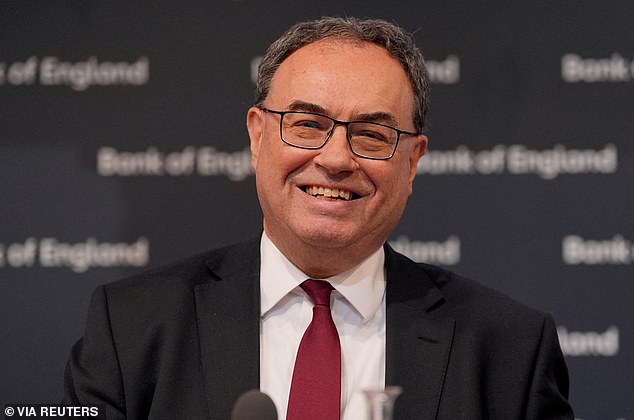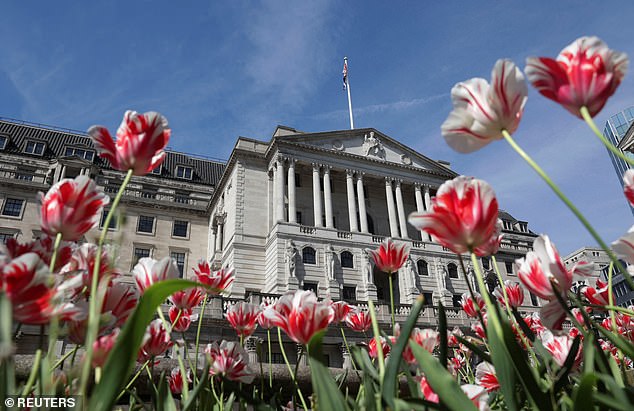Rising interest rates pushing hundreds of thousands of Britons ‘into poverty’, survey warns
- The Bank of England decided in June to keep interest rates at 5.25% to curb inflation
A third of a million homeowners have been pushed into poverty by rising interest rates, according to new research.
According to the Institute for Fiscal Studies (IFS), the number is likely to rise by 320,000 between December 2021 – when the Bank of England began raising interest rates – and December 2023.
The average mortgage rate in 2022 was around 2.3 per cent, equating to an interest payment of £240 a month for a household, a report from the IFS found.
But a tenth of households faced a mortgage rate of at least 4.7 per cent, which equates to £490 a month.
The research group warned that this could lead to more adults getting into financial trouble.
This is more than the 230,000 people expected when applying a single average interest rate.
Some 320,000 people may have been pushed into poverty by interest rates between December 2021 – when the BoE (pictured) raised rates – and December 2023

Bank Governor Andrew Bailey said in June that policymakers “must be confident inflation remains low” when deciding to keep the level at 5.25 percent
The rise in poverty is because borrowers who refinance their mortgages in 2022 are more likely to fall into arrears than borrowers with a mortgage who did not refinance their mortgages, the IFS said.
Sam Ray-Chaudhuri, a research economist at IFS and an author of the report, said: ‘Rising mortgage rates have played, and are likely to continue to play, a major role in the living standards of many households. But, perhaps surprisingly, they are not well measured in official income data.’
He added: ‘At a time when levels of deprivation and food insecurity have increased significantly, there is a risk that policymakers will not see what is really happening to poverty if poverty statistics obscure the true scale of this increase.’
Peter Matejic, Chief Analyst at JRF, said: “This report raises many questions about whether social protection is adequate for the challenges faced by households in need.”
But millions of borrowers are hoping the Bank of England will cut rates when authorities meet next Thursday.
Since August last year, the bank interest rate has been at 5.25 percent, the highest level in 16 years.
The Bank was one of the first central banks to raise borrowing costs after the pandemic and is now expected to ease that policy.

The Bank of England kept interest rates at 5.25 percent, potentially paving the way for a rate cut in August
But separate data from the Bank’s latest Financial Stability Report last month warned that four million mortgage borrowers still face sharp increases in repayments in the coming years.
Homeowners nearing the end of their fixed rate contracts are expected to see monthly payments rise by an average of £180 – or 28 per cent, equating to more than £2,000 a year – by the end of 2026.
A “very large” increase of 50 percent or more is expected for around 400,000 people, the report said.
The figures show that while interest rate cuts are expected to bring relief to many people in the coming months, a large number of borrowers are still facing painful financial consequences.
